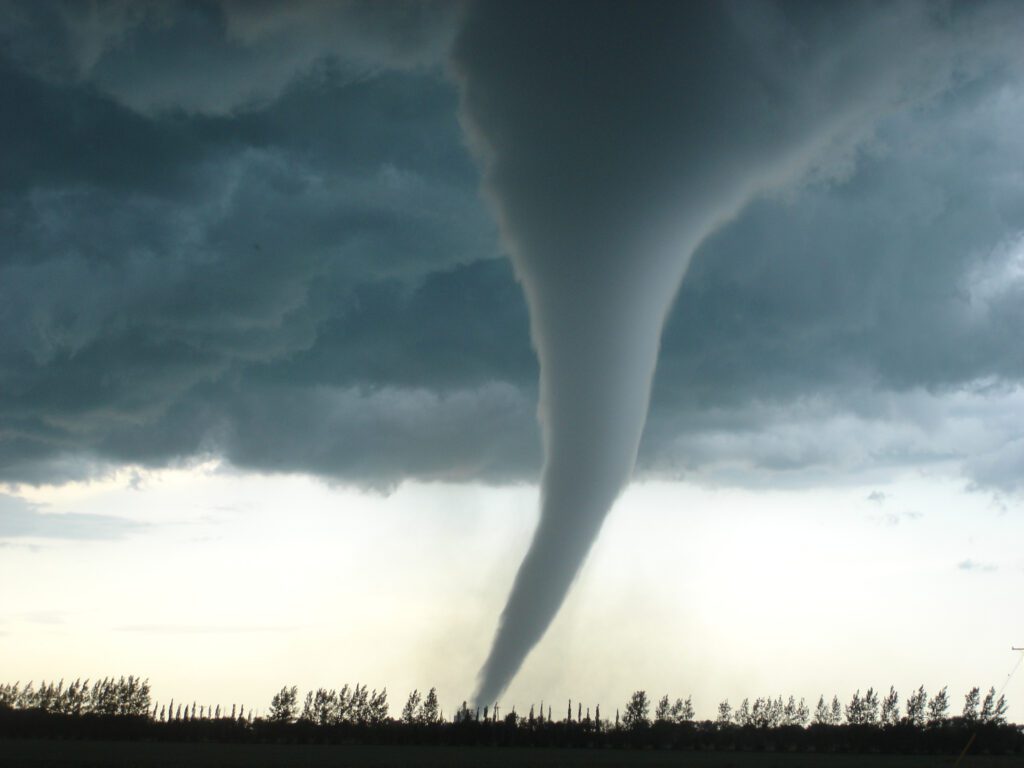The U.S. has the greatest number of tornadoes in the world. But why? A new study may have found out.
Recent research published in the journal Earth, Atmospheric and Planetary Sciences found that the smooth, flat ocean-like surface, which always seem to be upstream of tornado hotspots, could explain the high number of tornadoes.
Tornadoes can form through any kind of severe thunderstorm, although most are a result of a supercell storm. Supercell storms are violent systems that circulate from above, usually lasting for an extended period. In these storms, the circulation grows in an upward direction, and then also downward. This is how a tornado forms.
Central North America is the global hotspot for tornadoes. This is because the combination of the Rocky Mountains to the west and a steady influx of warm, moist air from the Gulf of Mexico presents the ideal geographic setup for severe thunderstorms, which can spawn tornadoes.
A stock photo shows a tornado. A new study found out more about why the U.S. sees so many.
A stock photo shows a tornado. A new study found out more about why the U.S. sees so many.
Similarly, South America has a good setup with the Andes to the west and the warm, moist air from the Amazon basin to the north. However, despite frequent severe thunderstorms, South America experiences significantly fewer tornadoes.
Funing Li and colleagues reached their findings by studying how surface roughness in regions upstream of storm hotspots affects tornado risk.
They used global climate models to simulate different surface conditions, such as the equatorward region of South America’s thunderstorm hotspot. In this area, they modeled a smooth, ocean-like surface and observed an increase in tornado potential. Alternatively, in North America’s Tornado Alley, they simulated a rough, forest-like surface and noted a decrease in tornado potential.
The new study suggests that the upstream surface’s smoothness and flatness are crucial factors in tornado formation. This may explain why the U.S. is one of the most common countries in the world for tornadoes.
Understanding why tornado hotspots form is essential for predicting how they are altered by climate change. Studies have already predicted that extreme weather events are set to become more common as the climate warms, but more research is needed to understand it fully.
Previous studies have found that a warming climate is exacerbating the conditions ideal for extreme storms. However, as a whole tornadoes are very difficult to predict, meaning there are still a lot of uncertainties on what impacts them.
Do you have a tip on a science story that Newsweek should be covering? Do you have a question about tornadoes? Let us know via science@newsweek.com.
Uncommon Knowledge
Newsweek is committed to challenging conventional wisdom and finding connections in the search for common ground.
Newsweek is committed to challenging conventional wisdom and finding connections in the search for common ground.
Source link : https://www.newsweek.com/north-america-vulnerability-tornado-1915158
Author :
Publish date : 2024-06-20 07:09:41
Copyright for syndicated content belongs to the linked Source.
